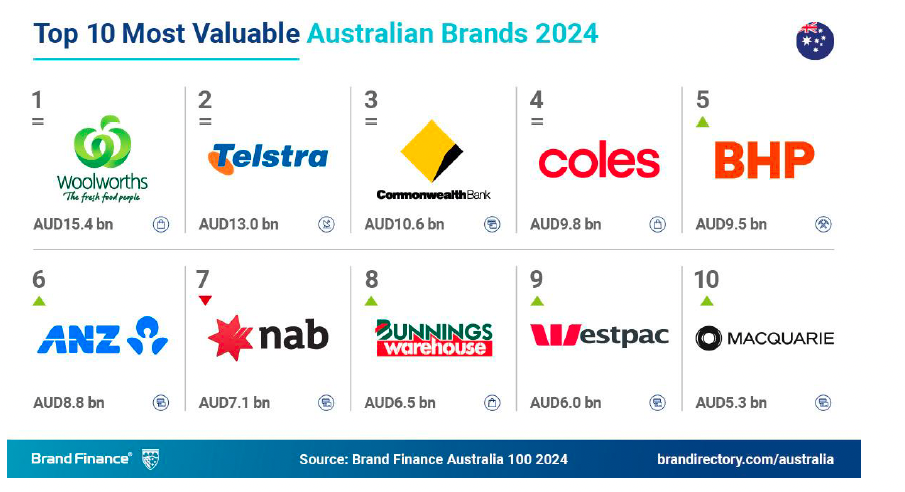AMP’s three-year marketing platform transformation shows what it really takes to make tech work for marketing – now watch out for the staff poaching

What you need to know:
- It’s the unsexy stuff that’s no longer dominating vendor keynote stages but lurking within the case study presentations in the session rooms: Marketing technology transformation, sans AI, to finally realise personalisation at scale and one customer view.
- Australian financial services provider, AMP, is one of those cases. During last week’s Adobe Summit, head of digital and customer, Bonnie Thorn, shared the three-year journey the business has been on to unify systems and data, stop relying on tech to execute what marketing wants to do, and execute more thoughtful campaigns.
- From six disparate email systems, a decisioning engine no one in marketing could operate, and other tech debt, AMP has rolled out the full Adobe suite of products.
- The platform is now being used for select use cases, including driving adoption of AMP’s new direct-to-consumer digital banking proposition – a marked departure from the B2B lineage of the 175-year-old business.
- Per Thorn: “Today we are owners of our destiny. We can build journeys two-and-a-half times faster, and we’re able to send our emails eight times faster. This means we have great results on overall clickthrough rates and the number of journeys completed.”
It’s the stuff no longer dominating keynote stages across tech vendor events, but remains the blunt reality for many marketing departments: Disconnected execution systems, expensive decisioning engines that only tech teams can drive, a lack of single customer view, poor customer experience off the back of flashy offers and advertising, and frustrated marketers wishing they could better control their own destiny. Not to mention the staff poaching when you manage to train someone up in all this new tech.
Amid all the hype, eager anticipation and trepidation surrounding agents and AI advancement at Adobe Summit last week were an array of case studies of customers locally and globally still slogging through the foundational work of unifying marketing platforms across the organisation to be able to personalise, improve productivity and better harness data and experience journeys in the marketing supply chain.
One of these was Australia’s own AMP. AMP head of digital and customer, Bonnie Thorn’s deep dive into how the financial services provider is working to unify systems, capability build, and better utilise technology to support a changing product set and customer base was a classic case of the marketing transformation still going on right now.
AMP has been around for 175 years, has 1.3m customers and $133bn in assets under management, with a mix of superannuation, retirement and now consumer-facing digital banking solutions.
Year one in AMP’s own three-year plan came in 2023 with building out the business case for a new martech stack. 2024 was all about implementing, leading into embedding the platform this year. As previously reported by Mi3, implementing the marketing tech stack (Adobe) kicked off under former CMO, Renee Howie, and started with standing up a customer data platform (CDP), and matching online and offline data. Over a period of four months, the business rolled out the CDP, Customer Journey Analytics and Adobe Journey Optimizer. AMP had already been using Adobe Experience Manager (AEM) to run its website, and also had Adobe Analytics. Over a 10-month window, these were all connected up.
You can imagine a customer’s journey: You see these great ads on TV, then you go to our website and it’s old website, old branding, old app and experience. We had a really fragmented digital experience that didn’t coordinate through the experience lens we were looking through. There was a lot of legacy platforms, tech debt. We were looking to simplify tech across the organisation, but also how to have one platform and one stack for all of our marketing.
Day zero: The reality at AMP
In her presentation, Thorn laid bare several challenges marketers will groan in sympathy with: An inability to connect online and offline data, marketing driving traffic coming into the website but no personalisation to maximise the visits, nor any idea as to what those prospects or customers were there for once they arrived.
There were six email automation systems and “an expensive, disconnected decisioning platform we couldn’t use ourselves,” continued Thorn. “That required technology and consultants to help us to execute campaigns. Because technology had to help us build them, we couldn’t get scale to market and get the speed to market we wanted.
“We couldn’t deliver a unified customer experience, had data in different places, using different platforms. There was no one unified customer engagement strategy.”
Not surprisingly, AMP’s set-up drove marketing’s desire to become self-sufficient. “We wanted to run our own campaigns, be the owners of our campaigns and be the drivers of our own destiny,” said Thorn.
“We needed to get to real-time reporting, and real time in general – that’s important. For us, we were trying to make sure that it’s real time at the point our decisions were being made. Take experiences in our app: We have people connecting through interactions. Say you display an offer or a notification in there: We want to make sure that when the customer accepts it, they can actually see that offer; or if they dismiss it, they don’t get the same offer again and be annoyed by it.”
Add on top of this AMP’s new brand platform, ‘Whatever wealthy you want’, which debuted two years ago and aimed to shift perceptions of what it means to be wealthy in today’s economic climate.
“You can imagine a customer’s journey: You see these great ads on TV, then you go to our website and it’s old website, old branding, old app and experience,” Thorn continued. “We had a really fragmented digital experience that didn’t coordinate through the experience lens we were looking through. There was a lot of legacy platforms, tech debt. We were looking to simplify tech across the organisation, but also how to have one platform and one stack for all of our marketing.”
Then enter a transformational direct-to-consumer and new customer set to think about. Earlier this year, AMP launched its new digital bank with propositions for personal and small business banking, plus a new app. It’s a marked step away from its B2B roots, going to market via financial advertisers and brokers.
“Finally, to be able to compete successfully, especially in direct-to-consumer we had to be able to compete with peers and competitors in market,” Thorn said. The question became: “How does that look for us in terms of CX we want to deliver across the entire journey, all those touchpoints and different channels, and how do we bring that to life?”
Selling three-year business plan – fourth time around
The first major hurdle was getting the business case approved. Four main use cases were identified for the first tranche of ROI delivery. AMP saw most value initially in journey and retention-led uses cases in its superannuation book, including pinpointing lifecycle moments, plus across its bank book. Although deliberately focused on getting new customers into the 25-year-old bank in the beginning, 14 interest rate rises over the last three years meant AMP had become less focused on acquisition, Thorn said – not dissimilar to the other banks, she insisted.
Actually, it was the fourth time the team put the business plan together before it got it over the line. Key to success was partnering with the tech department. Per Thorn: “You can’t run marketing tech with just marketing, you have to partner with tech to help deliver that. Tech supported us through business case and implementation process, which made us successful.”
2024 was the year of implementation, and AMP also made the decision to decommission platforms as it rolled out new kit. As well as new elements of the Adobe stack, it rolled out SMS channels, the new banking app and decisioning. AMP also introduced next-best interaction recommendations in the call centre. It built a new website, and pieced together AEM and Adobe Target to launch personalisation at scale in campaigns.
“We took a very pragmatic approach to how we were going to do it. We looked at cases today and what campaigns marketing was doing today, then what data is needed in platform in the first place,” Thorn explained. “We did not take 175 years of data and put it in the platform. We worked out what data to take and put fresh, clean data into the platform, and we put rules together to avoid complications of having just any data going in.”
Preferred data included website, behavioural and app data, certain types of consumer data plus B2B insights.
“Today we are owners of our destiny,” says Thorn. “We can build journeys two-and-a-half times faster, and we’re able to send our emails eight times faster. This means we have great results on overall clickthrough rates and the number of journeys completed.” She reported a 93 per cent overall clickthrough rate, and more than 75 of journeys launched per month.
Another successful use case example was AMP’s ‘Get Super Close to your Super’ campaign build. The first half of Thorn’s scheduling diagram was nothing new for marketers – executing above-the-line TV and out-of-home advertising.
“You also have campaigns going to existing customers, then also to non-customers in digital. But when you start to incorporate personalisation, you get to capture data from various sources into the CDP, make decisions on next-best interactions or offers,” she said. “If a prospect turns into a customer, we can then stop marketing to them through suppression. You can create more journeys that are specialised, personalised. You can build as many as you like – that’s what enabled us to be able to get a lift of about 18 per cent on our results.”
As Howie previously told Mi3, AMP’s brand uplift had been “material” 18 months after new brand proposition debuted, with AMP’s corporate reputation firm, RepTrack score lifting 3 points from Q1 22 to Q3 24. In addition, blended consideration hit the double-digit percentages, which was the marketing team’s target, from lows of 2-3 per cent prior to the brand work and first marketing platform improvements.
Something to consider as well are single point dependencies with these platforms – talent is incredibly short, which means every time you build and train someone up, they get poached by your competitors.
People – and poaching – is your next big watchout
One of the biggest areas Thorn warned her peers to watch out for as they attempt the same kind of transformation is the people and empowerment part of the equation.
“We continue to define processes – we talk people, process and technology,” she said. “You need to work out how these people to work together. When you get expertise and talent that are specialists in AJO or AEM, you need to work out how it all works together. You not only want to get the right quality data in there, but also get the right real-time reports and real-time campaign orchestration as well.”
Upskilling and capability building is also paramount, and AMP is constantly rethinking the baseline on what that maturity curve looks like to keep moving faster, Thorn said.
“Something to consider as well are single point dependencies with these platforms – talent is incredibly short, which means every time you build and train someone up, they get poached by your competitors,” she said. “We want to try to get more people learning the platform, rather than having a team that looks after AJO and another on AEM. We want to allow for lots of users.”
The broader learnings for Thorn are firstly to get your data ready before you start. “We’re taking what we need and then transforming it before it goes in there. So we’re talking a different approach to data and that’s partly why we could get this live in five months,” she said.
Choosing the right implementation partners also ensures your success, Thorn said. “When you’re launching a new platform, it’s unlikely you will have the subject expertise. Having an implementation partner who’s a coach can guide you through the technology, architecture and help guide you through that period of time and enable you faster as well. But it helps you get through this.
“And have a change manager through the project. They were instrumental to the whole project and helped us communicate to the right stakeholders, organised training and really embedded that change in the organisation… We were able to move through all that about 10 months’ into the new year. And as we’re learning more of how you’re doing things, they were key in creating those opportunities for change and making people comfortable with change.”





